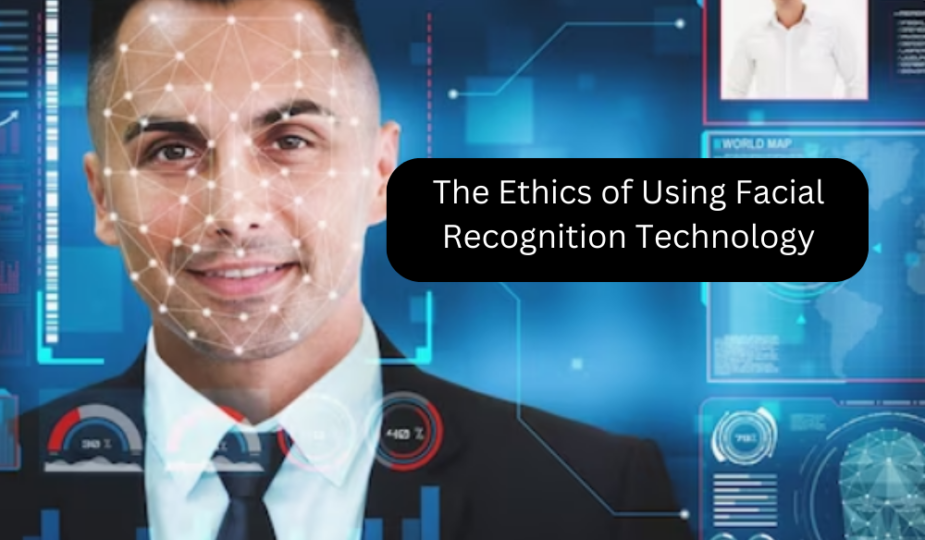In an era where the internet is the bedrock of our daily lives, the integration of facial recognition technology has become ubiquitous. Its vast and varied applications, from unlocking smartphones to surveillance systems and even personalized marketing. However, beneath its convenience lies a labyrinth of ethical considerations that demand introspection and regulation.
Understanding Facial Recognition Technology
Facial recognition technology employs biometric algorithms to identify individuals by analyzing unique facial features. It maps facial characteristics, creating a digital signature for authentication or identification. This technology utilizes cameras or scanners to capture facial data, processing it through complex algorithms to match against stored templates. It’s widely applied in security systems, access control, and authentication processes. However, concerns about privacy infringement and potential biases within these algorithms persist. Ethical hacking can expose vulnerabilities in facial recognition technology, improving its security and protecting user privacy. Understanding its mechanics involves grasping its reliance on biometric markers, data processing methods, and its implications for privacy and security in various domains, urging a balance between technological advancement and ethical considerations.
The Power and Perils of Facial Recognition
Facial recognition technology wields immense power, streamlining security and convenience. Its perils, however, lurk beneath the surface. The capacity for unchecked surveillance and potential privacy breaches raise significant ethical concerns. Biased algorithms mirror societal prejudices, amplifying discrimination. Its very convenience can erode personal privacy, blurring boundaries between security and surveillance. Artificial intelligence powers facial recognition technology, allowing computers to identify individuals from images and videos. The perils lie in its indiscriminate usage, necessitating stringent regulations and ethical frameworks to safeguard against misuse. Acknowledging its power and pitfalls is crucial in steering toward a responsible and ethical integration of facial recognition technology in our digitized world.
Privacy vs. Security: A Delicate Balance
The advancement of technology has blurred the line between privacy and security. Optimum internet access allows for rapid information sharing, yet it also intensifies concerns about data privacy. If not regulated, facial recognition threatens personal privacy as it can track individuals without their consent.
Ethical Considerations in Algorithmic Bias
Facial recognition algorithms are trained on existing datasets, which can perpetuate societal biases. These biases, often reflective of societal prejudices, can result in discriminatory practices, particularly affecting marginalized communities.
The Moral Imperative and Regulatory Framework
The moral imperative surrounding facial recognition technology necessitates a robust regulatory framework. Transparency and accountability must be paramount, ensuring ethical standards in its deployment. Collaborative efforts between governments, regulatory bodies, and tech entities are crucial to establish clear guidelines. Oversight mechanisms are imperative to audit algorithms, address biases, and safeguard against privacy infringements. Ethical considerations should drive the innovation and usage of this technology, emphasizing the responsibility to protect individual rights and societal values. We can only harness the potential of facial recognition technology through stringent regulation and ethical governance while mitigating its ethical pitfalls.
Striving for Transparency and Accountability
Transparency in the development and usage of facial recognition technology is fundamental. Companies should divulge data collection, storage, and usage information, enabling users to make informed choices about their privacy.
Ethical Standards and Oversight
Governments and international bodies must institute clear ethical guidelines and standards for deploying facial recognition technology. Oversight mechanisms should be in place to audit algorithms for biases and ensure adherence to ethical principles.
Towards a Balanced Future
A balanced approach is indispensable as we delve deeper into the age of the optimum internet, where technological advancements redefine our interactions. Harnessing the potential of facial recognition technology while safeguarding individual rights and societal values is a complex yet necessary endeavor.
Empowerment through Education and Awareness
Education plays a vital role in empowering individuals to understand the implications of facial recognition technology. Initiatives focused on raising awareness about data privacy, surveillance risks, and the ethical dimensions of technology are essential. By fostering a more informed society, individuals can make conscious choices regarding interacting with such technologies.
Collaboration for Ethical Innovation
The collaboration between technology developers, regulatory bodies, ethicists, and communities is crucial. It’s imperative to foster an ecosystem where ethical considerations are integrated into the core of technological innovation. This collaborative approach ensures that ethical guidelines are not an afterthought but are ingrained in the development process.
Striving for Inclusivity and Fairness
Addressing biases embedded in facial recognition algorithms requires deliberate efforts. Datasets used for training these algorithms should reflect the diversity of the population to minimize biases. Additionally, continuous audits and assessments are necessary to detect and rectify biases that could lead to discriminatory outcomes.
Read: 10 Things You Might Not Know You Can Use a USB Stick for
Regulatory Framework and Legal Safeguards
Governments and regulatory bodies must play an active role in establishing comprehensive frameworks that govern the use of facial recognition technology. Clear and stringent regulations and legal safeguards can ensure that these technologies are used responsibly, respecting individual rights and privacy.
Ethical Decision-Making in Business Practices
Tech companies need to prioritize ethical decision-making in their business practices. Ethical guidelines should be integral to corporate values, ensuring profit doesn’t supersede ethical considerations. Transparency about data collection, usage, and the purpose of facial recognition technology should be a norm, not an exception.
Quotes and Punchlines
- “Technology is a tool; how it is used determines its impact.”
- “Privacy is not an option, and it shouldn’t be the price we accept for just getting on the internet.”
- “The ethical compass should guide technological innovation, not vice versa.”
Conclusion
Facial recognition technology is a testament to human innovation, offering unprecedented convenience. However, its ethical ramifications must be addressed. As we navigate this frontier, a conscientious balance between technological advancement and ethical considerations must prevail to shape an innovative and honest future. Understanding the fundamentals of control panels is crucial for setting up and managing facial recognition technology access systems.
Author’s Bio:
Emmy Rossum is a tech enthusiast and digital maven, weaving a narrative tapestry that explores the intricate intersections of technology and human life. A fervent advocate for optimum internet utilization, their work aims to demystify complex tech concepts and empower readers to navigate the digital world with confidence.










